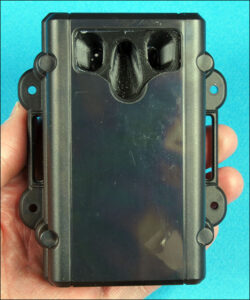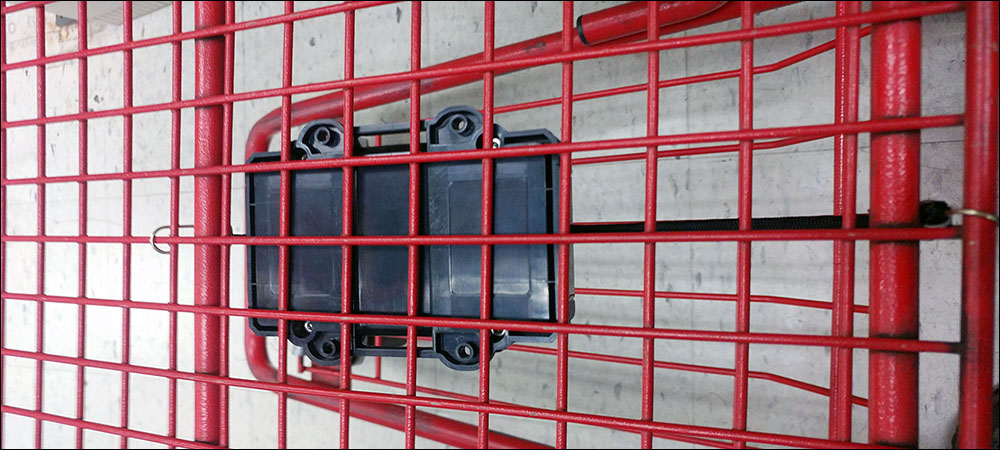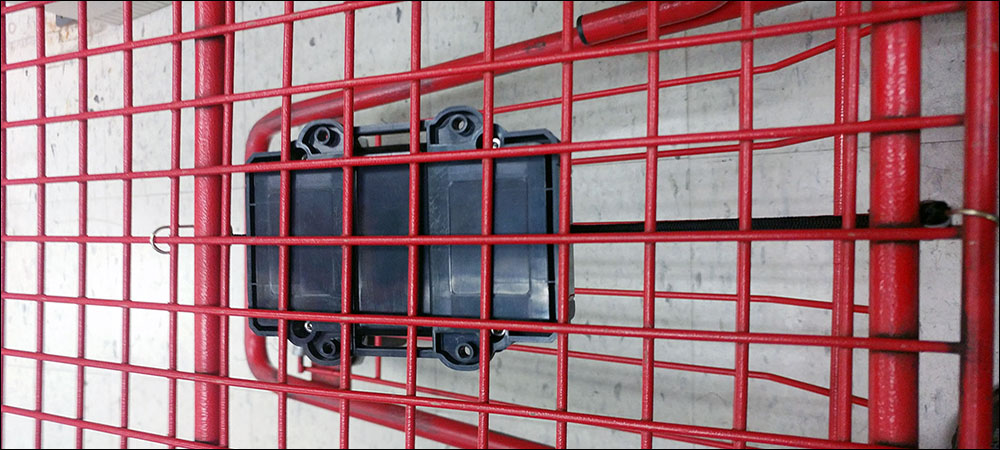Retailers face shrinkage resulting from a variety of sources including theft, but one of more common losses stems from simple human error. “Bottom of basket” (BoB) issues, in which unpaid products are missed as they leave a store, cost retailers approximately $2 billion in the United States per year, according to Craig Moyer, the owner of technology startup BoB Profit Partners. The firm has been designing a solution for the past three years that leverages RFID technology from Phase IV Engineering, and the system is now being deployed at a Pennsylvania market.
Tracking products leaving stores in the bottoms of baskets is a simple problem without an easy, foolproof solution, Moyer says. A bag of dog food, a package of paper towels or a six-pack of beer that customers put under their shopping cart is often overlooked, and these end up as losses for retailers. The problem is prevalent enough that shop clerks are commonly advised to “remember BoB” as they go about their work.

SONY DSC

Craig Moyer
The problem has been exacerbated by the COVID-19 pandemic, Moyer adds, as product package sizes are growing, making them more likely to require that lower shelf in the cart. Additionally, the barrier caused by the plexiglass that helps to prevent disease transmission also makes it more difficult for cashiers to look down into the bottom of each cart passing through their checkout lane. BoB incidents are largely honest mistakes, Moyer says, when customers go out to their car, realize the error, and are faced with the option of going back inside and standing in line again to pay for the item or simply leaving. Often, they pack the product up and leave. “Either way,” he says, “it’s a bad customer experience.”
Phase IV Engineering’s Internet of Things (IoT)-based Leap Sensor technology enables BoB Profit Partners’ retail loss-prevention system to address unpaid merchandise left on shopping carts’ bottom racks. It consists of infrared time-of-flight sensors built into carts, which come with RFID tags that respond to interrogations from fixed readers at cash registers. If a dedicated computer running Phase IV software detects a product on a cart’s bottom shelf, a reminder is displayed on a screen for the customer and clerk to see.
Moyer, a consultant for retail loss prevention, theft and misappropriation, launched BoB Profit Partners more than three years ago. He traveled to meet with several leading retailers and built programs to reduce their losses, he says. Many of his clients were struggling with BoB detection, and many had been using a camera-based solution, such as Lane Hawk, that employs pixel-based artificial intelligence to identify items at the bottom of a cart. Such a system requires maintenance, however, to add new products.
“Retailers had said to me, ‘I don’t want to know what is on the cart, just that there is something,'” Moyer says. “I did think RFID was the answer.” He brought the challenge to a university that worked on potential RFID solutions, but the students were unable to create a solution that would fit the environment. The system needed to be flexible and ruggedized enough to be built into carts that nest, are moved outdoors and are used in highly trafficked areas. “Everyone knows the problem, but finding the solution is the magic. It’s easy to understand but hard to fix.”

Scott Dalgleish
 In 2018, Moyer started developing the solution with Phase IV Engineering, leveraging its Leap Sensor technology. “We looked at a variety of options, but it had to be a really rugged and robust solution,” says Scott Dalgleish, Phase IV Engineering’s CEO. The solution is a unit with microprocessors, a memory board, UHF RFID tags, a battery and four time-of-flight sensors that beam an infrared signal down into the basket’s bottom shelf. The sensor detects the distance the IR light travels before being reflected back, and thus can determine what is in its field of vision.
In 2018, Moyer started developing the solution with Phase IV Engineering, leveraging its Leap Sensor technology. “We looked at a variety of options, but it had to be a really rugged and robust solution,” says Scott Dalgleish, Phase IV Engineering’s CEO. The solution is a unit with microprocessors, a memory board, UHF RFID tags, a battery and four time-of-flight sensors that beam an infrared signal down into the basket’s bottom shelf. The sensor detects the distance the IR light travels before being reflected back, and thus can determine what is in its field of vision.
Typically, the floor under an empty cart would be 14 inches down, but if something were loaded in the cart, that distance would be shortened. BoB Profit Partners has a patent pending on the solution. The units needed to be very low in power to ensure batteries would not need to be replaced often, so the system was design in such a way that the units remain in sleep mode until each cart nears the checkout stand. A standard UHF RFID reader stationed in each checkout lane sends an interrogation signal that is received by the cart module’s chip.
That transmission prompts the sensor to wake up, take a time-of-flight reading and send data back to the reader via UHF RFID. The results of the measurement are forwarded to the software, running on a local computer, which determines if any items have been detected. Typically, stores use a screen connected to the computer that is visible to both the cashier and customers, which displays a reminder in opaque letters to check the bottom of the cart. “The two-way messaging sign is a way to correct the problem,” Moyer says, by reminding individuals to check the bottom of the basket.
At the same time, a notice can be sent to management to make them aware of the issue. This makes it possible to address any problems not resolved with the customer. The technology can also be used in self-checkout lanes. The sensor technology includes a variety of attributes that accommodate typical actions that might take place at a store. For instance, Dalgleish explains, if a shopper has placed a foot under the shelf while waiting in line, the system will recognize the difference and will not report it as a problem.

To date, the solution has been tested in prototype, while the commercialized version is now being deployed at Saubel’s Markets, located in York, Pa. The system will include RFID readers mounted at all six checkout lanes and sensor units installed on all 100 shopping carts. The solution can leverage off-the-shelf UHF RFID readers, Dalgleish reports. By using UHF RFID, he says, “We’re leveraging very established technology,” which could work with any common UHF RFID reader providers.
In the long term, Moyer expects to provide additional features with the solution, such as data collection for analytics purposes. For example, the technology could collect data regarding which carts moved through which lanes, how quickly this happened and when delays might have occurred. Typically, retailers will buy the solution outright, along with an extended service agreement.
Moyer predicts a return on investment of six to eight months, based on a reduction in missed unpurchased products. The system is now available for use throughout the country, he says. “We’re ready to get in front of national, regional and local grocery chains,” Moyer states. “Home improvement and big box stores—any retailer with shopping carts.”


